- The House of Wisdom
- Posts
- It's impossible to picture Paris without the Eiffel Tower today.
It's impossible to picture Paris without the Eiffel Tower today.
But 136 years ago, when the tower was built, the story was different... people hated it.
Happy Friday folks,
It's impossible to picture Paris without the Eiffel Tower today.
But 136 years ago the story was different — it was meant to be a temporary masterpiece.
Here's how the world's most visited monument was (almost) intentionally demolished...
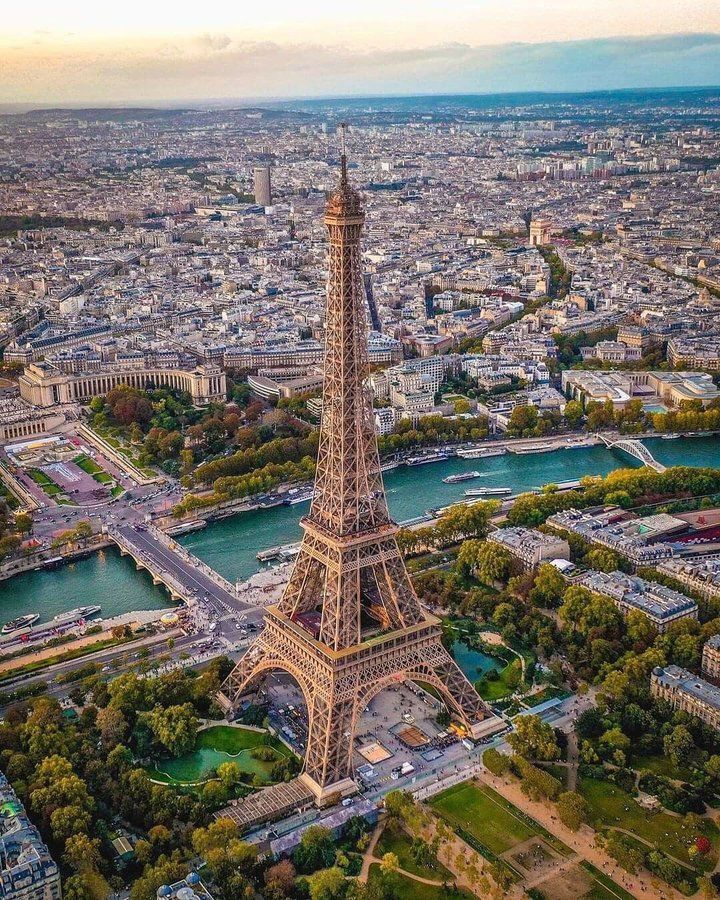
Photo by world_walkerz
On the 31st March, in 1889, the Eiffel Tower was completed. It was officially the first building in history that was taller than the Great Pyramid of Giza. The Great Pyramid had held this record for almost 4,000 years prior.
Nothing like it had ever been built before — an iron colossus rising 330 meters into the sky. The tower was also the first man-made structure to break both the 200m and 300m height mark. For reference, its height can be compared to an 81-story skyscraper.
What makes it even more remarkable? It was built in just around 2 years using over 7,300 tonnes of iron and 2.5 million rivets. Some interesting to note is that every year, during summer, the tower grows an additional 6 inches due to thermal expansion… and then it contracts back again in the winter.
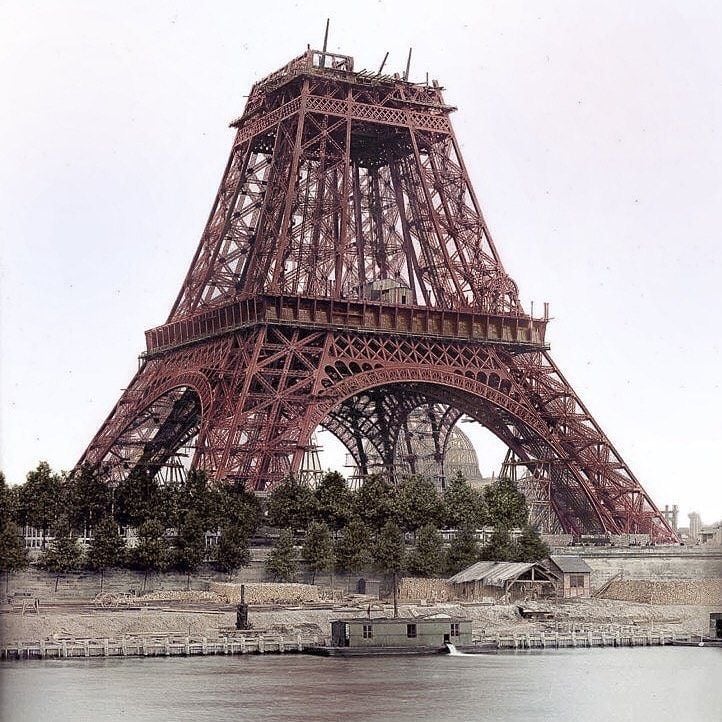
The Eiffel Tower still under construction (1887-1889)
For 41 years, it stood as the tallest structure ever built by man. Until eventually being overtaken by New York’s Chrysler Building, in 1930. But when it was built, the French people hated it. Writers, artists and musicians decried it as a modern eyesore that destroys the traditional Parisian skyline.
On February 14, 1887, “Protest against the Tower of Monsieur Eiffel” was published on the front page of the famous Le Temps newspaper:
“We, defenders of “the beauty of Paris that was until now intact” are protesting “in the name of the underestimated taste of the French, in the name of French art and history under threat, against the erection in the very heart of our capital, of the useless and monstrous Eiffel Tower, which popular ill feeling, so often an arbiter of good sense and justice, has already christened the Tower of Babel…”
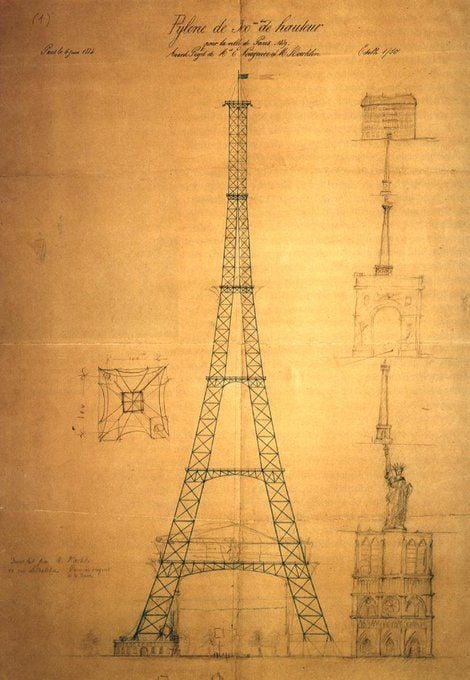
This was the first drawing of the Eiffel Tower by Maurice Koechlin from 1884. (You can also see a size comparison with the Notre Dame de Paris, the Statue of Liberty and the Vendôme Column.
Quick announcement: Our Subscriptions are live on 𝕏!
You can now directly support our work and be the first to read future editions before they drop anywhere else...
It went on to read:
“Will the city of Paris continue to associate itself with the baroque and mercantile fancies of a builder of machines thereby making itself irreparably ugly and bringing dishonor to itself? Because the Eiffel Tower that even the commercial Americans didn’t want, will without a doubt dishonor Paris.” And the protesters conclude by mocking this “tower of ridiculous vertiginous height, dominating Paris just like "a gigantic black factory chimney,” spreading across the whole city “like a dark ink stain, the odious shadow of this odious column of bolted metal.”
Facing all the backlash, the tower's engineer, Gustave Eiffel, still had hope. He was allowed to keep the tower standing for just 20 years according to an agreement he had signed with the city of Paris…
Are we to believe that because one is an engineer one is not preoccupied with the beauty in one’s constructions, or that one does not seek to create elegance as well as solidity as well as durability?
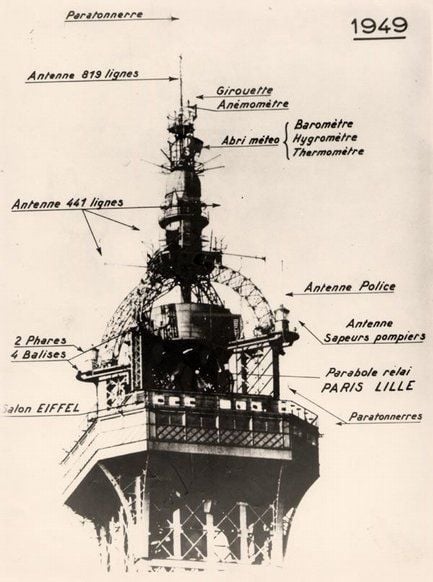
The details of the Eiffel Tower when it was used as a radio tower.
But first, why was it meant to be temporary?
You see, the only reason it was built was because of the World Fair (or the Exposition Universelle in French). Every 5 years, nations would show off their greatest advances in technology and architecture. It wasn’t just about impressing the public. It was a matter of national pride.
The Eiffel Tower was built as the centerpiece of the 1889 World Fair — and also marked 100 years since the French Revolution.
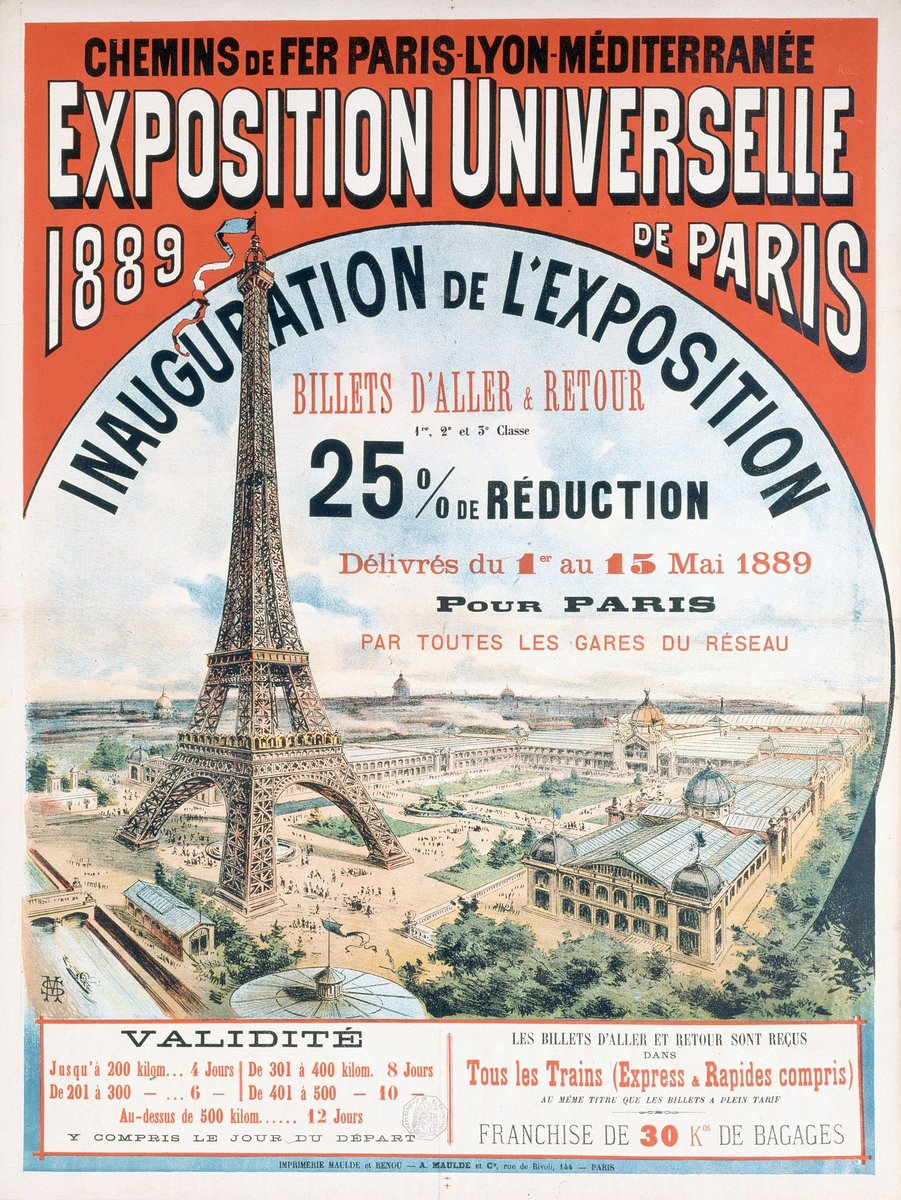
As soon as the fair finished, most of the buildings were torn down.
Only the Eiffel Tower survived. It was given 2 decades but in the end, it proved too valuable to tear down. When World War I broke out, its strategic value became undeniable. The radio tower intercepted enemy messages and even helped in the Battle of the Marne.
By the mid-20th century, the perspective completely changed.
The Eiffel Tower became an iconic symbol of ambition and hope and Paris' skyline would be indistinguishable.
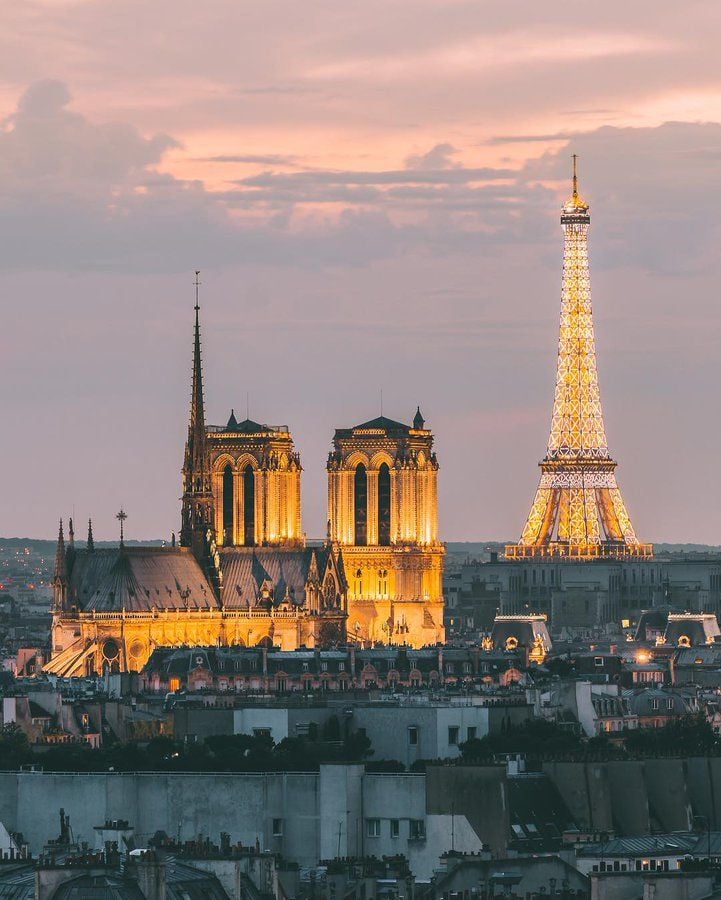
And people had a vision for its future.
There was even a proposed concept for allowing cars to access its 2nd floor, in 1936.
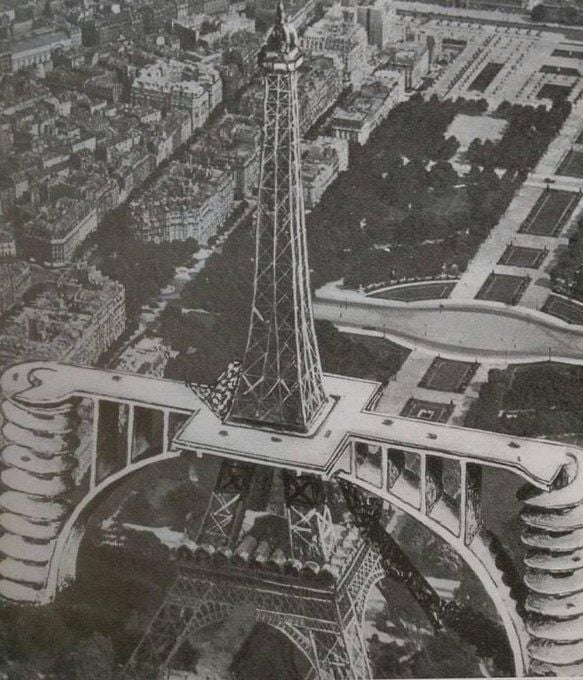
Its impact is so significant that today you cannot imagine France without it.
And some cities have even built their own version, like one in Las Vegas or the more controversial one in Tianducheng, China.
The tower isn’t the only replica you see in this picture. In fact, the whole city is carbon copy of the city of Paris.

Something few people know about the Eiffel Tower is Gustave's secret room at the top.
Here, he would invite nobles such as Thomas Edison to carry out experiments, whilst having the best view in all of Paris…
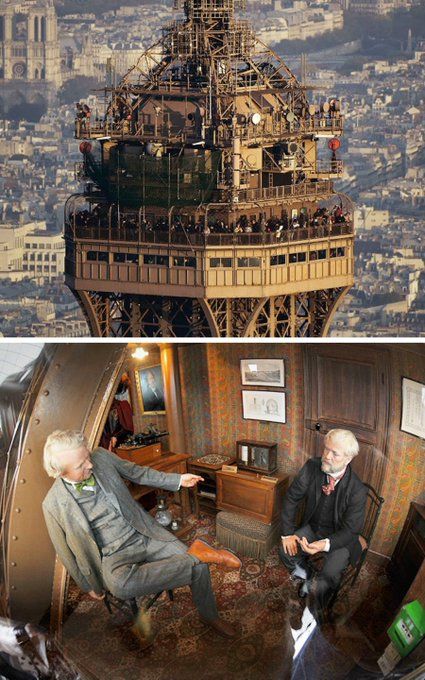
And that’s it for the Eiffel Tower. Record-breaking by all means. It seems inseparable from Paris, today.
But just over 100 years ago, Parisians would’ve paid any amount to have it demolished.
Until Next Time,
World Scholar

P.S. Thank You for getting this far! What topic should we dive into next? Let me know directly by replying to this email!
Reply